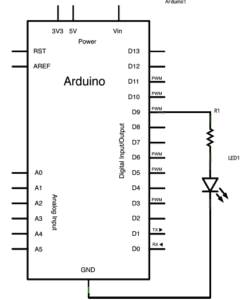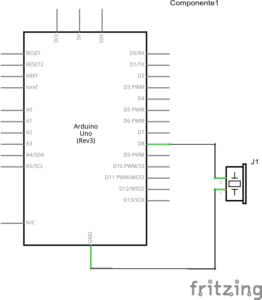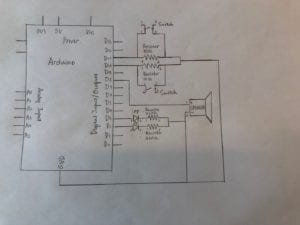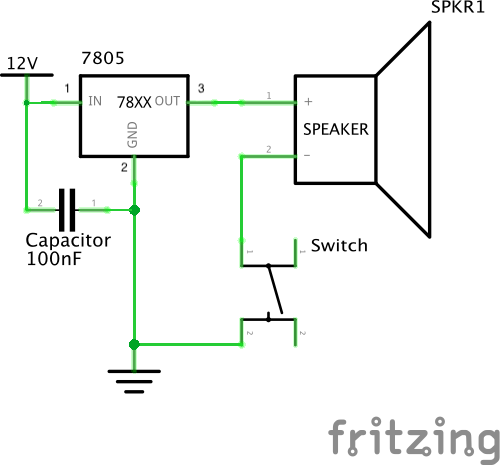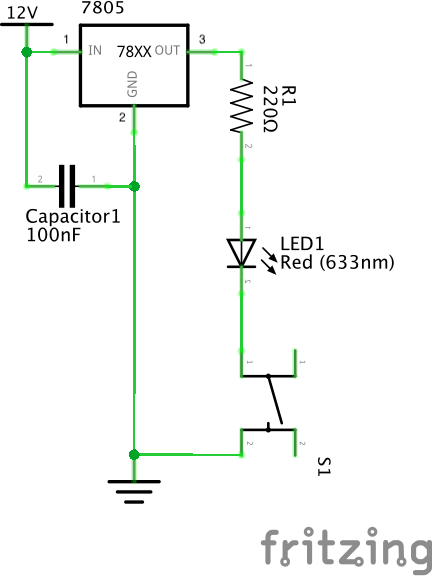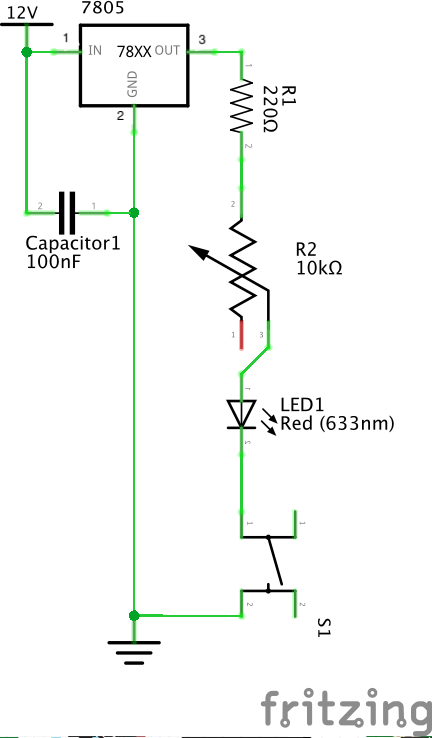Infrared Distance Sensor
Components
a buzzer
a breadboard
a Arduino uno
Jumper cables
a infrared distance sensor
Process
we use the speaker as the output. When a person gets closer to the sensor, the sound of the speaker becomes louder; vice versa. For coding, we refer to https://www.arduino.cc/reference/en/language/functions/math/map/.
Also, to see the changing output clearly, I added “Serial.println ()”.
Diagram
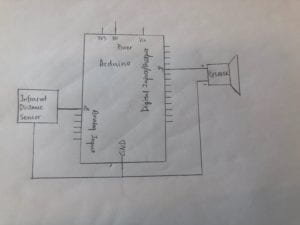
Moisture Sensor
Components
a buzzer
a breadboard
a Arduino uno
Jumper cables
a moisture sensor
Process
Since the moisture sensor and the infrared distance work in a similar way, we basically replaced the infrared distance sensor with the moisture sensor.
Answers to the Questions
Question 1:
What did you intend to assemble in the recitation exercise? If your sensor/actuator combination were to be used for pragmatic purposes, who would use it, why would they use it, and how could it be used?
I intended to assemble a infrared distance sensor in the recitation exercise. As a person gets closer to the sensor, the buzzer speaks louder. If my sensor combination is to be used for pragmatic purposes, I suppose shop-owners would like to use it. During daytime, this circuit help them to know if customers are coming; during nighttime, it keeps them alert to thieves. Whenever customers step into the zone where the sensor can tell, it then make a piece of music to show welcomeness. After the shop is closed, the sensor makes warning noice if anyone tries to get close to the commodities on the shelves.
Question 2:
Code is often compared to following a recipe or tutorial. Why do you think that is?
There are both similarities and difference between code and following a recipe or tutorial. While the recipe or tutorial tell people what to do in a simple, understandable language, code use another language and needs translation so that people can understand. Since the object of code is computers while that of the recipe is human beings. Code must be more precise than a recipe. For instance, language like “a little” can be used in a recipe, but will not work in coding. The instruction computers receive must be formal (mathematical). However, both coding and recipes are instructive. Through code, people tell computer what to do; through recipe or tutorial, people are told what to do.
Question 3:
In Language of New Media, Manovich describes the influence of computers on new media. In what ways do you believe the computer influences our human behaviors?
As computers permeate into human’s daily life, people adapt their behaviors to the use of computers. For instance, people’s use of language change due to the spread of social media. And people’s relation becomes more reliable on computers. However, I do not consider it as unidirectional. People surely influence the computers. When designing computers, people unconsciously implant contemporary beliefs. Therefore, I believe that computer influences our human behaviors in many aspects and vice versa.
